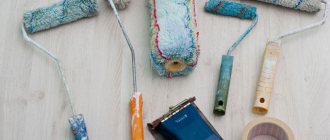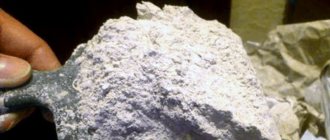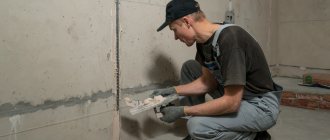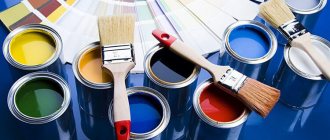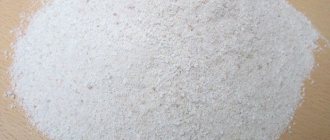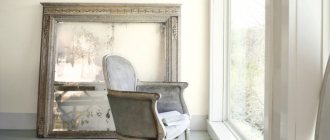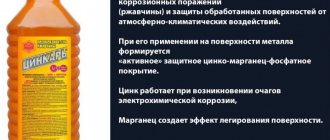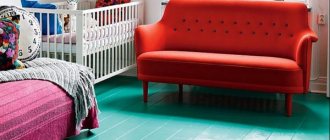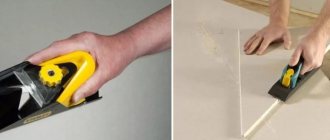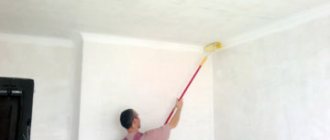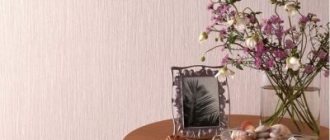Puttying is an important link in preparing walls for finishing. Painting or wallpapering without first leveling the walls with putty is fraught with stains and deformations. The paint is absorbed unevenly, which is immediately noticeable as soon as the lighting angle changes. Because of this, paint peeling in different areas is inevitable. The defects will have to be eliminated. But with wallpaper everything will be much more complicated. Wall putty will help you avoid doing double work. Or "putty". These words have the same meaning. Let's look into the nuances.
Putty is an important step in wall finishing
Classification of wall putty by grain size
Putty is a fine-grained mixture. There are three types based on their purpose.
- Starting.
- Finish.
- Universal.
Starter is excellent for smoothing out large cracks and irregularities at the initial stage of processing. It consists of large grains and the output has a rather rough texture. Creates the first level of finishing layer. Sets quickly and is durable. Apply in a dense layer of 0.3 to 2 cm.
According to its intended purpose, putty is divided into: starting, finishing and universal.
The finishing is distinguished by fine grain. With its help you can achieve mirror smoothness.
- Placed on a pre-sanded starting layer.
- When applying the finishing putty in a layer higher than 0.4 cm, it cracks and “sags.” The ideal option is a layer of 0.1 to 0.4 cm.
- The finishing mixture is easy to work with when dry, but sanding the “finish” is a dusty business.
The universal one combines the best properties of the usual starting and finishing lines. For shallow unevenness, the universal option can be successfully used. As the main means for leveling walls, universal putty is also popular and provides acceptable smoothness. But to achieve an ideal result, two-level processing is still desirable. Due to its versatility, this type of putty is more expensive than starting and finishing putty.
The finishing putty has a fine grain
The best starting putties
The distinctive features of starting putties are high strength, excellent adhesion and large grain size. Such compositions are used when leveling walls and ceilings after plastering or for application to an unprepared base. The experts selected several high-quality compounds.
Volma Standard
Volma Standard starting putty is well known to builders, both in Russia and abroad. The material has proven itself to be excellent for leveling the surfaces of ceilings and walls. Experts recommend using the composition on concrete and gypsum-containing bases located in dry rooms. The putty deservedly became the winner of the rating.
Professional finishers manage to create an ideal coating using the starting composition, after which you can begin wallpapering or painting. The mixture is perfectly applied thanks to the binder gypsum and the introduction of special modifiers. Additional advantages of the material include high thermal insulation properties and ease of grinding.
Advantages:
- versatility of use;
- plastic;
- affordable price;
- ease of application;
Disadvantages - takes a long time to dry.
KIILTO LK
This time-tested brand has released a separate line of putties, which are based on the use of polymers. The fraction is 0.5 mm. Used on plastered and brick surfaces. The minimum layer will be 3 mm, and the maximum will be 5 mm.
The manufacturer managed to achieve a snow-white coating, which can be used under wallpaper or subsequent painting in light colors. Adhesion density coefficient – 0.5 MPa. According to buyers, the environmental friendliness of the components deserves special attention. Available in cellulose bags weighing 20 kg.
Advantages:
- for interior work;
- elasticity coefficient;
- you can work with the material for 24 hours;
- Any method of application is allowed;
- value for money.
Bolars façade
One of the best starter putties on the market. Attracts buyers not only with price, but also with an increased coefficient of weather resistance and frost resistance. Due to the characteristics of the composition used, the substance can be used for finishing wet rooms.
The indicators of adhesion, strength and vapor permeability deserve special attention. The process of preparation and subsequent application does not require special skills. Maximum layer thickness - 1 cm. Consumption - 1.4 kg per m2. It takes 24 hours to dry completely.
Advantages:
- vapor permeability;
- ease of application;
- suitable for wet areas;
- moisture resistance;
- weather resistance.
Flaws:
- high consumption.
Founds Ekonsilk
Osnovit Ekonsilk putty has a good set of technical characteristics. The domestic manufacturer sells products at the most attractive prices. Experts put the composition in second place in the rating for its minimum drying time (5 hours) and a wide range of applications. The putty is slightly inferior to the leader in maximum layer thickness (5 mm). When applying a mixture with a thickness of 1 mm, the product demonstrates the lowest putty consumption (0.9 kg/sq. m).
Finishers are very pleased with the good adhesion of the material and the plasticity of the building mass during application. The composition smooths out well, and after drying it forms a durable coating without the slightest hint of shrinkage. The only disadvantage of the product, which is often mentioned in reviews, is the appearance of cracks.
Advantages:
- low price;
- no shrinkage;
- plastic;
- economical consumption.
Disadvantages : cracks may appear after drying.
Rusean TT
This dry mixture is used as a base putty. An excellent solution for leveling walls made of different materials. It is used for both external and internal work. It should be noted that the composition can be used in rooms with high levels of humidity, when laying electrical systems and arranging facades. An excellent base for wallpaper and painting. To treat 1 m2 of surface you will need about 1.1 kg of mixture.
You can create a truly durable and high-quality base by applying several layers. Before applying the next layer, make sure that the previous one is completely dry. Maximum thickness – 0.5 mm.
Advantages:
- copes with the designated functions;
- vapor permeability;
- high adhesion;
- economical consumption;
- moisture resistance.
Types of mixtures according to degree of readiness for use
The mixtures are available dry and ready-to-use. Which putty is best for walls? The main emphasis during repair and construction work of varying complexity is on dry mixtures. Due to their low cost and ease of transportation and storage. Dry solutions have other advantages.
- Loyal to temperature conditions during storage.
- The solution is easy to prepare.
- Different amounts of water give the composition different thicknesses.
The mixture can be dry or ready-to-use.
There are also problems that you will encounter when using powdered mixtures.
- The prepared solution should be used promptly for its intended purpose. The composition thickens within an hour maximum. Cheaper putties can thicken within 15 to 30 minutes.
- If the working surface has a large volume, the solution should be prepared in portions.
- Store carefully sealed in a dry place, avoiding contact of the powder mixture with moisture.
One of the first recommendations when using dry powder is to bring the composition to a homogeneous mass. It is best to use a construction mixer or drill when mixing, since it is difficult to achieve the desired consistency manually.
The mixture must be mixed with a construction mixer.
The best finishing putties
To prepare the surface of walls and ceilings for painting or other decorative finishing, finishing putty is required. The mixture ensures maximum smoothness and evenness, eliminating the slightest defects. There are several proven lineups in our 2021 rankings.
Knauf Rotband Pasta
It will take 5 hours for the layer based on this substance to dry completely. According to experts, it is better to buy this mixture for finishing work and puttying ceilings and walls. Despite the consumption of 2 kg per 1 m2, the purchase price is more than justified. The high adhesion rate deserves special attention.
During the drying process, shrinkage is not observed, as well as the appearance of cracks. After drying, the work surface acquires a perfect white color. The substance is vinyl based and contains a number of polymer additives, water and limestone.
Advantages:
- dries quickly;
- the result is a perfectly white surface;
- ease of use;
- adhesion;
- no shrinkage.
Sheetrock SuperFinish
Sheetrock SuperFinish finishing putty has a whole set of unique qualities. Firstly, the composition can be applied immediately after opening the bucket lid. Secondly, the product beats competitors in the main characteristic of the finishing material. This is a grain size of 0.03mm. The putty fits perfectly on substrates such as concrete, plasterboard, tongue-and-groove slabs. The combination of these characteristics is complemented by an affordable price, for which the composition takes first place in the rating.
Advantages:
- smallest grain size;
- no shrinkage or cracking;
- the mixture is ready for use;
- versatility of use;
No deficiencies
Weber vetonit LR+
A dry composition that belongs to the category of finishing coatings. The maximum layer thickness is 5 mm. Grit factor – 0.3 mm. Based on the description provided, it will take about 24 hours for complete drying. The product from one of the best manufacturing companies allows you to create an ideal even, white and smooth coating.
The composition retains its original properties for 48 hours. It is based on the use of organic plasticizers. The composition can be applied either by machine or manually. To avoid mistakes when choosing, it should be noted that the substance can only be used when arranging heated premises.
Advantages:
- ease of operation;
- the material is easy to grind;
- value for money;
- perfect white color;
- positive reviews from specialists and consumers.
Disadvantages - not identified.
KNAUF Multi-Finish
A popular model from one of the best European manufacturers of building materials. Allows you to achieve the most smooth and even surface without the need for additional manipulations. This is exactly the base required for painting or wallpapering.
It is based on the use of modern plasticizers, as well as reinforcing fibers, which give the composition the necessary properties. The composition has optimal plasticity and is used for puttying walls and ceilings.
Advantages:
- allows you to create a single canvas;
- adhesion;
- smooth surface;
- numerous positive reviews.
Disadvantages - takes a long time to dry.
Putties, ready for use
The finished solution is a thick suspension on a latex or dispersion base. Sold in plastic buckets. Retains its properties and does not thicken during storage due to special chemical additives.
About the benefits.
- Even an opened solution can be stored for a long time without loss of quality.
- Plastic.
- Does not require additional ingredients before use.
The price of the material increases in proportion to the capabilities. This can be considered a disadvantage of ready-to-use solutions.
This option will be more expensive compared to dry powders
What tool can you use
To complete the work you will need the following tools:
- Construction mixer - a drill with a special attachment. It is with the help of this tool that it is better to stir the mixture if you purchase dry rather than ready-made. The mixer completely eliminates lumps and makes the mixture homogeneous, ready for application.
- Spatulas of different sizes to apply the composition to hard-to-reach places, such as corners, openings, behind pipes and radiators.
- A building rule to determine the degree of leveling.
- Skins for grouting.
- Container for the composition.
Classification by composition
The division of putties by composition is determined by the material from which they are made. There are gypsum and cement dry mixtures, as well as ready-to-use polymer-based putties. The latter are divided into acrylic and latex. Finishing specialists choose which putty is best based on the task at hand. After all, certain types of wall putty can only be used for finishing the room, and not outside, and there are also special compositions intended for use exclusively on wood.
You need to choose a putty based on the task at hand.
What types of putties are there?
Classification is carried out based on the main criteria:
- type of binder component;
- appointments;
- condition.
All manufactured products are divided into main types:
| Type | Description |
| Gypsum or cement | Cement ones are among the most expensive. They are characterized by frost resistance and excellent moisture resistance. Designed for façade work and finishing of premises with high humidity. Plaster models help create a unique microclimate at the site. The expense is insignificant. They set quickly. The result is a perfectly flat and smooth surface. |
| Facade and finishing | Apply a second layer after leveling the base. Allows you to finish finishing walls or ceilings before painting or wallpapering. The result is a silky and dense layer that does not need to be sanded. Suitable for treating cement and concrete surfaces, as well as plaster. Eliminates minor defects. Completely evens out the coating. Used for sealing seams in plasterboard boards. |
| Polymer | Helps eliminate foundation defects. Gains strength quickly. To clean ceilings and seal cracks, it is worth purchasing leveling putties. They contribute to high-quality adhesion of the material to the coating. Experts advise choosing a popular model depending on the base material. This is the only way to achieve a durable, strong, reliable and high-quality surface. |
| Versatile and waterproof | Belong to the universal type. Apply in a thick layer. The finish is reminiscent of finishing. The structure is dense, fine-grained. Acts as a self-leveling composition. The manufacturing is based on the use of environmentally friendly components with a high density. Allows you to make the base smooth and even. Cracks and bubbles do not appear. The surface requires mandatory grinding. The shade is light or white. Ideal for home use. Waterproof ones are designed for use in damp rooms. Portland cement and effective polymer additives are used in production. Suitable for indoor and outdoor use. Works well with plastered concrete and brick. |
Based on the release form, the product has a dry and ready-made appearance. Dry mixtures must be prepared independently. To do this, add the amount of water specified in the instructions and mix thoroughly. The positive aspects of dry mixtures include:
- reasonable price;
- the ability to independently determine the volume of mixture that will be needed for specific work;
- It is assumed that the goods will be stored at any temperature;
- The shelf life is long provided that the packaging is not opened.
There are few disadvantages, but they are worth mentioning:
- instant setting;
- impossibility of further use;
- compliance with clear proportions when breeding.
The finished product is completely suitable for use. There is no need to carry out any additional manipulations with it. The positive aspects include excellent elasticity. Easy and simple to apply to walls and ceilings. When the container is opened, the substance can be stored for a certain period of time, subject to the room temperature specified by the manufacturer. The lid must be tightly closed. The main disadvantage is that they are not inexpensive.
Product varieties
The products produced differ in composition. The following main groups of putties are distinguished:
- Mineral. The basis is gypsum, sand, cement, lime. The main purpose is to decorate walls in very damp rooms. The price is reasonable. Environmentally friendly product. Wear resistance to dry abrasion is low.
- Acrylic based. Suitable for indoor and outdoor use. Helps create a perfectly smooth base. Apply a layer of one millimeter. Shows resistance to moisture. Convenient and quick to use. It is extremely popular due to its lack of odor. It is worth noting the environmental friendliness. The resulting base can be coated with any paints and enamels. Often used to clean up kitchens, bathrooms, toilets and other similar spaces. If you have to level deep strips, you need to carry out the work in two stages. Otherwise, cracks may appear. You need to putty with glasses and a respirator.
- Plaster. The main task is to put gypsum fiber and plasterboard sheets, concrete and cement coatings in order. Used for interior work. Positive qualities: ease of application, plasticity, excellent adhesion, vapor permeability, environmental friendliness, no shrinkage, possibility of grinding. Afraid of significant temperature changes. Suitable for dry rooms. Objects with high humidity and outdoor work should be excluded.
- Cement. Differs in versatility. Can be used for puttying external and internal walls. It is in high demand due to its strength and resistance to high humidity. Resistant to temperature changes. Elasticity is minimal. Over time, microcracks may appear. May cause slight shrinkage. Then it will be necessary to re-putty.
- Gypsum-lime. The main components are lime and gypsum. Convenient to use. Adhesion is high. Does not shrink. It is worth noting environmental friendliness and safety. Does not tolerate moisture well.
- Water-dispersed. It is made on the basis of a polymer dispersion in water. Suitable for smoothing uneven walls, tidying up concrete, wood, stone and plastered surfaces. Not afraid of water. Environmentally friendly product. Fire safety at its best. Convenient to use. Dries quickly. Adhesion at a high level.
- Polymer. It is based on epoxy resin, acrylic, polyurethane and other polymers. Suitable for indoor putty. Eliminates unevenness in brick, concrete, drywall, fills cracks. Not afraid of high humidity. The result is excellent. The price is high. Not afraid of temperature changes, does not deform. Has an increased adhesion rate.
- Oily. The result of mixing oils. Suitable for interior finishing manipulations. It is distinguished by its durability, drying speed, ease of use, and budget price. Experts advise purchasing models due to their increased adhesion to all substrates. Not suitable for materials that do not contain oil.
- Silicone. It is based on silicone resins. The main purpose is external puttying of walls. It is durable, resistant to ultraviolet radiation, and withstands dust and dirt. Working with it requires experience and skill.
- Oil-glue. The main component is casein glue. Recommended for use on interior putty. It costs a lot of money, but it is elastic and easy to apply. Afraid of moisture. Strength is low. Suitable for compositions that contain drying oil as a component.
- Adhesive. The main components are glue, drying oil and chalk. Can be used both inside and outside the object. Eliminates minor defects.
- Latex. The base is oil-glue. Calcite filler is present. Helps level walls and ceilings inside buildings. When dry, cracks do not appear. Easy and simple to apply. The flexibility is impressive. Afraid of sub-zero temperatures.
Gypsum base
This is a white putty, the gypsum for which is made from marble flour or quartz sand. When using marble flour as a filler, manufacturers achieve the thinnest possible layer of application. As a rule, this is the final look with layer leveling accuracy of a fraction of a millimeter. Quartz-sand gypsum produces a larger particle size. Starting type mixtures are created from this material. The material on plaster in the vast majority of people’s minds is what we used to call putty.
Gypsum putty is applied in a very thin layer, it serves as a finishing coating
Gypsum putty is an excellent product for finishing the walls of residential premises, both for painting and for wallpaper. In addition to versatility and odorlessness, it has another positive property that few people know about. It can positively influence the indoor microclimate. Absorbs excess moisture from the surrounding atmosphere and returns it when humidity drops. This ability of a material is called hygroscopicity. But this same property makes it undesirable to use gypsum putty on the outside.
Gypsum putty is an excellent option for finishing walls.
Why do you need to putty the walls?
Any wall requires compliance with all processes before the final finishing begins. The first step is to prepare the wall. At this stage, the old coating is removed to the base, the wall is cleaned and degreased. The next stage involves rough finishing, which prepares the wall for further processing, sanding and applying the final coating.
At the third stage, painting, wallpapering or decorative plaster is applied. Without a rough finish, it will not be possible to achieve smooth walls and a long service life of the coating. It is possible that unevenness will be visible to the naked eye, and the top layer will begin to move away from the wall.
The right putty will help extend the life of the repair.
In order for the walls and ceiling to be smooth and last for many years, you need to know what material they are made of and which putty is best suited for application to walls or ceilings
Cement base
Cement plus lime mortar - this was the recipe used to knead putty using a homemade method during Soviet times. The level of cement-based mortars for wall finishing has increased today. Cement is now available in different qualities. And, the higher the class of the raw material, the thinner the layer of putty you can apply to the surface. Some manufacturers add antifreeze to cement, which ultimately makes the material frost-resistant. The negative side of this type is the high degree of shrinkage. Over time, cracks may appear. Cement-based mortar should not be used to work with wood and plastic textures.
The negative side of this type is the high degree of shrinkage
Polymer acrylic putties
The main disadvantage of an acrylic base is its high price. Otherwise there are a lot of advantages. This ready-to-use mixture based on synthetic acrylic has a more uniform and viscous consistency, does not shrink or crack. Cement and gypsum lose out in this case. In addition, the acrylic mixture is suitable for work both indoors and outdoors. If the putty in the bucket has dried out, you can slightly moisten it with cold water, which will return the stagnant material to its former elasticity.
This type of raw material is very expensive compared to others
The best quality universal putties
The advantage of universal putties is the possibility of high-quality leveling. Such compositions are used in preparation for painting or pasting relatively smooth walls. Below are the best putties for walls and ceilings that are universal in use.
Weber Vetonit JS
This composition allows you to quickly and effectively process walls and ceilings. Can serve as a basis for subsequent painting. It is based on the use of polymers that retain the material’s working properties over a long period of time. An excellent solution for dry rooms.
After drying, the base is white and smooth. No cracks or shrinkage are observed. Despite the high cost, the material is in high demand among domestic builders.
Advantages:
- There is no shrinkage during the drying process;
- resistance to cracking;
- popular model, time-tested;
- universal composition;
- adhesion.
Disadvantages: lack of moisture resistance.
KNAUF-Fugen
The KNAUF-Fugen universal putty has proven itself well in heated rooms. The manufacturer added polymer additives to the gypsum powder, which make the mixture elastic. Experts note the high adhesion of the material; the putty holds well on concrete and plastered substrates. The composition has an affordable price and economical consumption. So, when applying a layer of 1 mm, only 0.8 kg/sq.m. is consumed. m of mixture.
Experts also highly appreciated the quality of the putty; the grain size (0.15 mm) is lower than that of its closest competitors. Due to the hygroscopicity of gypsum, it is not recommended to use putty in bathtubs. Despite some limitations, the composition becomes one of the winners in our ranking of the best putties for 2021. The resulting surface dries without side effects (shrinkage, cracking).
Advantages:
- economical consumption;
- versatility;
- excellent adhesion;
- elastic layer;
No deficiencies
VGT acrylic universal
VGT acrylic universal putty is very easy to use. The finished composition can be used not only in dry rooms, but also in bathtubs or when decorating external bases. The maximum layer thickness reaches 7 mm. All these qualities allowed the putty to take second place in the ranking of the best putties for walls and ceilings. The high consumption of 1.4 kg/sq.m did not allow the material to rise higher. m, as well as a long drying time (24 hours). The putty has excellent adhesion, which allows the material to be used when leveling wooden, concrete, brick and gypsum fiber substrates.
Despite its versatility, the putty is resistant to direct exposure to precipitation. Finishers note a slight shrinkage of the acrylic composition upon drying. The finished mixture tends to dry out if you do not cover the bucket with a lid.
Advantages:
- good adhesion;
- frost resistance;
- moisture resistance;
Disadvantages : slight shrinkage when drying.
UNIS BLIK
This gypsum-based composition will eliminate significant unevenness on the surface of the concrete ceiling. The maximum permissible layer will be 0.8 mm. An excellent indicator compared to competitors. Also used to eliminate unevenness on plasterboard structures. It will take at least 7 hours to dry completely. The consumption of material is significant, since the composition contains large inclusions.
Advantages:
- cracks do not appear during the drying process;
- arbitrary range of layer thickness;
- elasticity;
- price;
- a universal type of putty.
Disadvantages - significant expense.
Founds Ekonsilk
White gypsum putty can be used to create a layer no more than 50 mm thick. It will take 5.5 hours to dry completely. An excellent solution for arranging surfaces of any type. There is an increased coefficient of adhesion and plasticity. During the drying process, cracks appear, which is the only drawback of the mixture.
The substance can be used to level brick, plasterboard and concrete surfaces. An excellent solution for creating a thin layer of plaster on the ceiling or walls. It is used to perform internal repair work in rooms with an optimal level of humidity. Can serve as a basis for paint and varnish layers, wallpaper and decorative plaster.
Advantages:
- for leveling walls and ceilings;
- affordable price;
- used as a grout for cracks;
- versatility;
- An excellent solution for sealing seams.
Working with drywall under wallpaper
The very name of the surface material contains the answer to the question of which putty is best to level such walls. The structure of drywall contains gypsum. This means that we choose gypsum for wall treatment. An important thing: we coat the seams between the sheets with the starting one, and the surface itself with the finishing one.
For puttying drywall, it is better to choose a gypsum mixture
Puttying different surfaces
If we are dealing with brick, cement or concrete, then when working it is advisable to use cement in two levels: starting and finishing. The choice of putty used will depend on the class of cement in the composition. For finishing plasterboard surfaces, the ideal option is gypsum. Gypsum can also be used on other surfaces. If funds allow, then feel free to use a polymer putty to level the putty. If the walls are being treated for painting, then it is best to use ready-made solutions.
For tools, stock up on a set of spatulas, a drill with an attachment or an industrial mixer, a mixing container, sandpaper or a hand sander, a roller, a brush and a primer tray.
Where does wall puttying begin?
Plaster will help level out large reliefs, but to achieve a mirror-like surface, you need putty, which has a much thinner consistency. In addition to its main purpose - removing defects on the base, it also solves other equally important problems. With its help, for example, you can create complex curved surfaces (arches, columns, domes, etc.), as well as design various complex architectural details (mouldings, cornices, rods, etc.).
Note: as a rule, on properly applied plaster, in order to obtain a mirror-thin surface, it is enough to apply one layer of finishing putty. On relatively flat but porous cement substrates, it is sometimes possible to do without plaster altogether. The technology for leveling walls is quite simple. First, the surface is primed, which strengthens it and makes it evenly absorbent. Next, it is covered with a layer of putty and allowed to dry completely. They sand, remove dust (remove the smallest particles formed from grinding) and apply the finishing layer.
Leveling walls with putty - how to move the spatula
